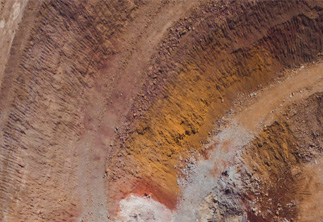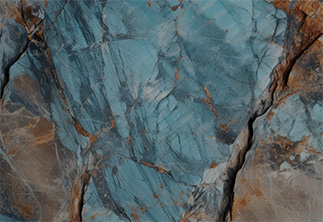Green Mineral Profile
Cobalt
Overview
Overview
Africa holds a significant portion of the world's cobalt reserves, with the Democratic Republic of Congo (DRC) leading with 48% of global reserves, amounting to 4 million tonnes. The DRC, Madagascar and Morocco represent 49% of global cobalt reserves. In 2021, the DRC dominated global cobalt production, accounting for 72%, while Madagascar and Morocco were the eighth and eleventh largest producers respectively.
The DRC's notable mining projects include the Metalkol, Tenke Fungurume, Sicomines, Mashamba East, and KOV mines. Madagascar's significant operation is the Ambatovy Mining Project. Key export destinations for cobalt include China, Singapore, South Korea, Belgium, Malaysia, the Netherlands, the USA, Japan, South Africa, and Canada.

Cobalt reserves
The DRC, Madagascar and Morocco account for 4,113,000 tonnes of cobalt reserves, representing 49% of the world’s total cobalt reserves.
The countries with the largest share of global cobalt reserves are the Democratic Republic of Congo (DRC) (48%); Australia (18%); Indonesia (7%); Cuba (6%); along with the Philippines, Madagascar, Canada and Russia.
- Global cobalt production is dominated by the Democratic Republic of Congo (DRC) which has cobalt reserves amounting to 4,000,000 tonnes, constituting 48% of global reserves.
- Madagascar has the second largest reserves in Africa, with cobalt reserves amounting to 100,000 tonnes, and 1.2% of global reserves.
(4,000,000 tonnes)
(100,000 tonnes)
(13,000 tonnes)
Cobalt production
- The DRC accounted for 72% of global cobalt production in 2021.
- Madagascar was the eighth largest producer of cobalt globally in 2021, with production of 2,800 tonnes (1.7% of global production).
- Morocco was the eleventh largest producer of cobalt globally in 2021, with production of 2,300 tonnes (1.4% of global production).
(119,000 tonnes)
(2,800 tonnes)
(2,300 tonnes)

Major cobalt
mining projects
 DRC
DRC
Metalkol mine is a surface mine situated in Katanga. Owned by Eurasian Resources Group, the mine produced an estimated 55,908 tonnes of cobalt in 2021.
Tenke Fungurume mine is located in Katanga. The mine is owned by China Molybdenum and produced an estimated 18,501 tonnes in 2021.
Sicomines mine is a surface mine located in Katanga. The mine is owned by China Railway Group and produced an estimated 17,154 tonnes of cobalt in 2021.
Mashamba East mine is a surface mine situated in Katanga. The mine is owned by Glencore Plc and produced an estimated 17,775 tonnes of cobalt in 2021.
KOV mine is a surface mine situated in Katanga. The mine is owned by Glencore Plc and produced an estimated 16,491 tonnes of cobalt in 2021.
 Madagascar
Madagascar
Ambatovy mine is a major operation mining and refining nickel and cobalt. It is one of the largest foreign investments in Sub-Saharan Africa and ranks among the largest nickel mining operations in the world. Operational since 2014, the project is a joint venture between Sumitomo Corporation and Korea Resources Corporation.
Main copper export destinations
 DRC exports in 2020
DRC exports in 2020
|
|---|
| China ($2.17 billion) |
| Singapore ($148 million) |
| South Korea ($15.1 million) |
| Belgium ($12.9 million) |
| Malaysia ($12.1 million) |
 Madagascar exports in 2020
Madagascar exports in 2020
|
|---|
| Netherlands ($10.8 million) |
| United States of America ($9.32 million) |
| Japan ($5.24 million) |
| South Africa ($4.19 million) |
| Canada ($3.88 million) |
 Morocco exports in 2020
Morocco exports in 2020
|
|---|
| Netherlands ($41.6 million) |
| Japan ($13.4 million) |
| China ($9.17 million) |
| United States of America ($9.23 million) |
| Chinese Taipei ($3.94 million) |
Processing capacity
Processing capacity
Cobalt production in both Zambia and the DRC is realised as a by-product of the large copper mines in the region. Some of the operations terminate at concentrate production, which they sell on.
- ERG Africa Chambishi has a cobalt processing plant in Zambia but this plant does not produce battery-grade material for export.
- Companies in the DRC mostly process copper-cobalt concentrate to produce cobalt hydroxide, which reduces the weight for transport.

Value add initiatives
- The United Nations Economic Commission for Africa (UNECA) has identified several opportunities for the development of regional value chains that cut across central Africa into East and Southern Africa for battery-minerals and electric-vehicles. In November 2021, the results of a study to determine the cost of producing lithium-ion battery precursors in the Democratic Republic of Congo and Zambia was released. These countries have signed a cooperation agreement to facilitate the development of value chain in electric battery and clean energy sector.
- The cooperation agreement is expected to provide a framework for bilateral cooperation to develop the battery value chain.
- The SADC Industrialisation Strategy and Roadmap (SISR) 2015–2063 was adopted by all Member States in April 2015. At the 40th SADC Summit, held in August 2020, it was noted that a profiling assessment had been completed and the battery energy storage sector was identified as an investment opportunity for increased participation in global value chains. Mineral beneficiation, through the promotion of the development of global and regional value chains, is a key feature within the SISR.
- To encourage cooperation, the proposed the Southern African Development Community (SADC) Regional Mining Vision suggests mechanisms to coordinate and redistribute benefits across countries.
Thank you for your message!
Your message has been sent. Our aim is to get back to you within a few business days. If you have any questions, please feel free to contact us on AMDC@africa-union.org.
Exception occurred
Feedback
Please use this form to send feedback on this page (see our privacy policy and cookie policy). Please note that we may take a few days or weeks to respond.






